Selecting the right kitchen sink involves more than just looking at the price. You should also consider your kitchen’s design, your style choices, and how frequently you use the sink. Whether you’re exploring kitchen wholesalers for bulk options or looking for wholesale cabinets, it’s important to think about how the sink complements your overall cabinetry. This guide will help you navigate the wide range of sinks, ensuring you choose one that fits both your aesthetic and functional needs. If you’re searching for cabinets for sale near me, cabinet stores near me, or a custom cabinet shop near me, the right sink can be the finishing touch in your kitchen transformation.
Types of Kitchen Sinks: Which One is Right for You?
Kitchen sinks are available in a variety of styles to match different kitchen designs and requirements. To select the ideal sink for your kitchen, think about how frequently you use it, the tasks you will do, and the available space. If you’re working with a kitchen cabinet manufacturer or searching for cabinet warehouse near me, it’s essential to consider how the sink will complement your overall cabinetry. Whether you prefer natural kitchen cabinets, Shaker style cabinets, or want to explore options from kitchen cabinet companies or cabinet makers near me, the right sink will tie the entire kitchen together. Selecting the appropriate sink ensures it aligns with your style, fulfills your practical needs, and fits seamlessly within your kitchen layout.
1. Single-Bowl Sinks
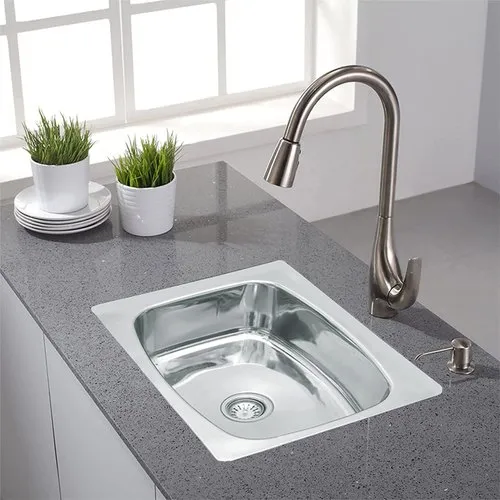
A single-bowl sink is just as it sounds—one big basin for cleaning dishes, pots, and pans. These sinks are great for smaller kitchens or anyone who likes a simple look. The spacious basin allows for washing large cookware or soaking dishes easily. A single-bowl sink is perfect if you don’t require multiple sections for different tasks.
Pros:
- Ample space for big items.
- Clean and simple design.
- Ideal for smaller kitchens or limited counter space.
Cons:
- Not as versatile for multitasking (like rinsing while washing).
- Might not work well for large families with lots of dishes to wash.
2. Double-Bowl Sinks
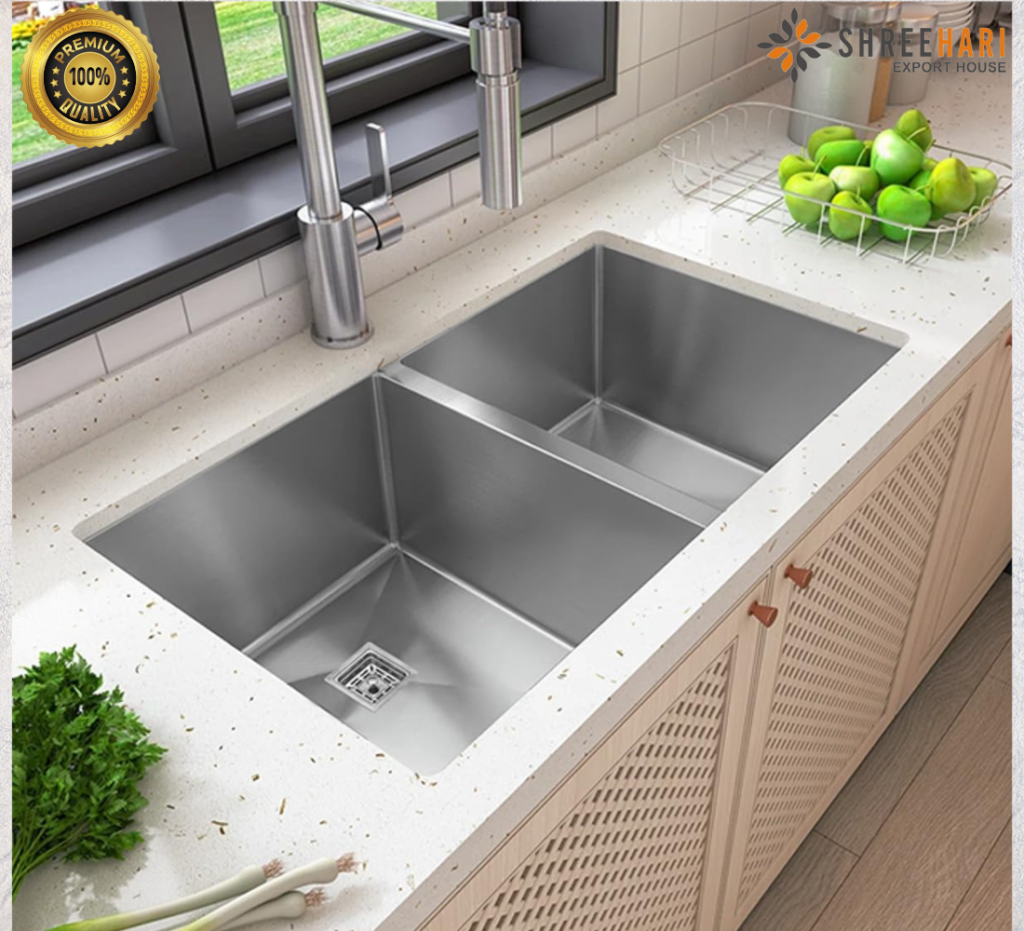
A double-bowl sink comes with two separate basins, allowing you to perform multiple tasks at once. This is ideal for washing dishes in one bowl while rinsing or prepping in the other. The size of each bowl can vary depending on the configuration—common options are 50/50, 60/40, or 70/30, where one bowl is larger than the other. Double-bowl sinks are perfect for busy kitchens where multitasking is a priority.
Pros:
- Allows for multitasking: washing, rinsing, and prepping simultaneously.
- Versatile for larger kitchens with lots of cooking and cleaning.
Cons:
- Takes up more counter space.
- May not work as well for larger pots and pans if the bowls are too small.
3. Farmhouse (Apron-Front) Sinks
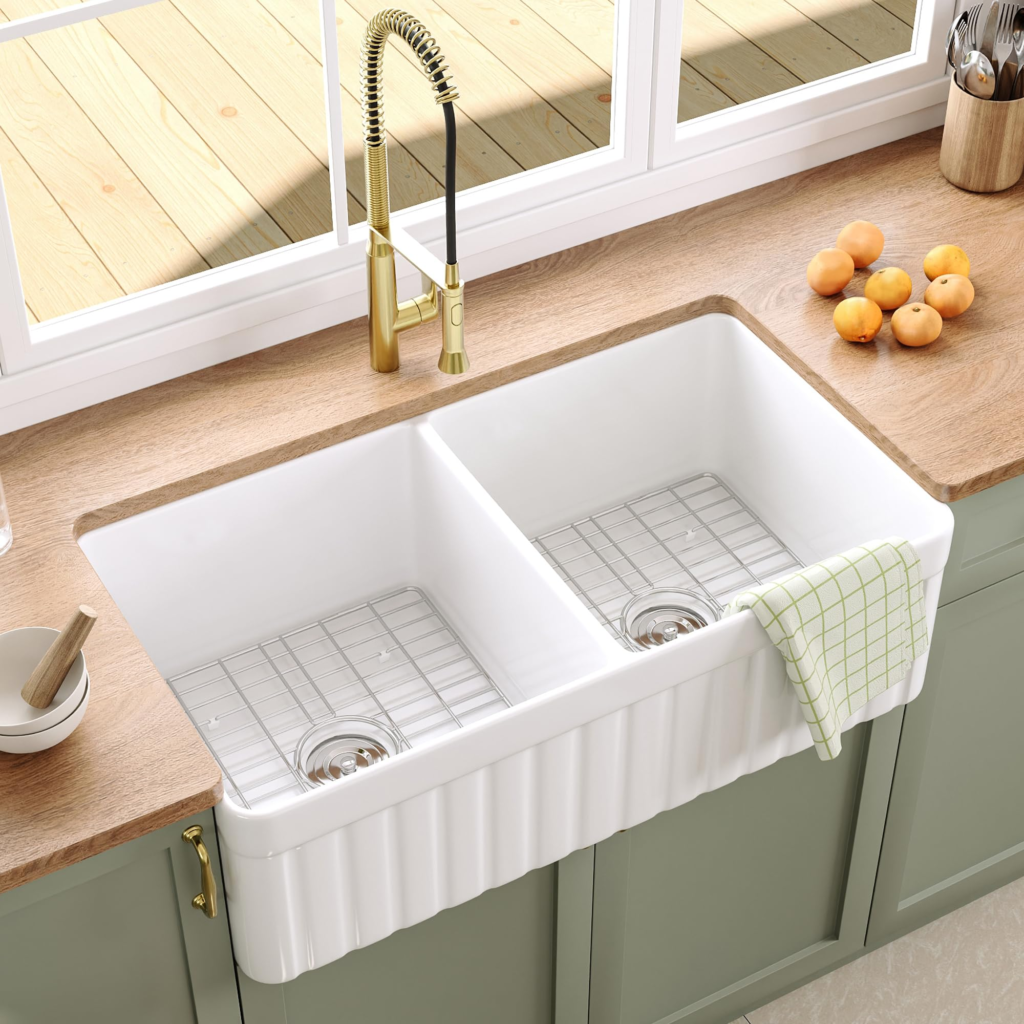
Farmhouse sinks—also known as apron-front sinks—have a deep basin with an exposed front that extends out from the cabinetry. These sinks are typically larger and provide a spacious area for washing large pots, pans, and dishes. The classic design is often seen in rustic or country-style kitchens, but modern versions in materials like stainless steel or granite composite are also available.
Pros:
- Deep basin, perfect for large cookware.
- Classic, elegant style that makes a statement in your kitchen.
- Easier to clean larger items.
Cons:
- Requires a special base cabinet for installation.
- Often more expensive than other types.
4. Workstation Sinks

Workstation sinks are designed for busy kitchens, turning your sink into an entire prep station. These sinks typically include built-in ledges or accessories like cutting boards, drying racks, and colanders, allowing you to prep food, wash dishes, and dry items all in one place. Many workstation sinks come with integrated accessories that slide across the ledges, making them highly functional and space-efficient.
Pros:
- Multi-functional: combines a sink with prep space.
- Great for busy households or professional kitchens.
- Saves counter space by integrating accessories.
Cons:
- More expensive due to the added features.
- Takes up a bit more counter space compared to standard sinks.
5. Bar Sinks
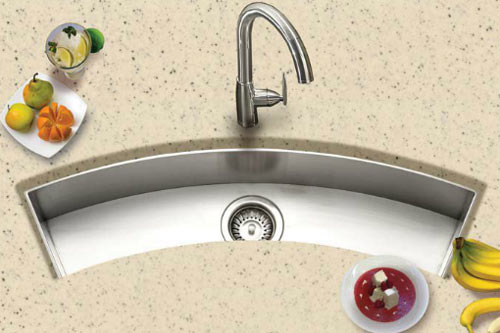
A bar sink is a smaller version of a traditional kitchen sink, usually installed in a kitchen island, wet bar, or secondary prep area. Bar sinks are perfect for those who entertain often, as they allow for drink preparation and clean-up away from the main kitchen sink. Despite their smaller size, they’re highly functional and can help reduce clutter in the primary sink.
Pros:
- Compact and ideal for small spaces like kitchen islands or wet bars.
- Keeps the main kitchen sink free for meal prep and larger tasks.
- Great for entertaining and preventing cross-contamination between food prep and drinks.
Cons:
- Limited space for large items.
- Not suitable as the main sink in a household with heavy dishwashing needs.
6. All-in-One Sinks
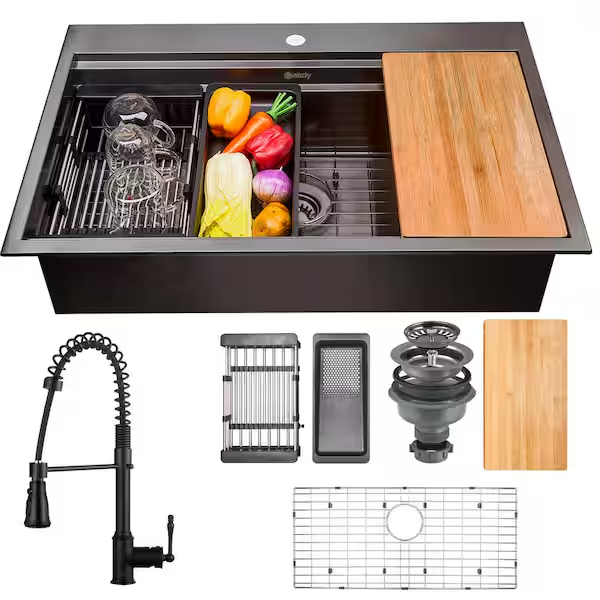
An all-in-one sink is a convenient solution where the sink, faucet, soap dispenser, and other accessories (like a cutting board or colander) come in a complete package. These sinks are designed for easy installation and provide a cohesive, streamlined look. Many all-in-one sinks are available in a range of materials, such as stainless steel and granite composite, making them both stylish and functional.
Pros:
- Easy to install with a complete setup.
- Perfect for those who want a coordinated, neat design.
- Often includes additional accessories to enhance functionality.
Cons:
- Limited customization options for features.
- Can be more expensive than purchasing separate components.
7. Commercial Sinks

Commercial sinks are designed for heavy-duty use in professional kitchens, restaurants, or large households. These sinks are usually much larger than residential sinks and are made from durable materials like stainless steel. They’re designed to handle large volumes of dishes and heavy cleaning tasks, often with a deeper basin and wider space. They may also come with additional prep areas to maximize workspace.
Pros:
- Extremely durable and spacious.
- Built to withstand high volumes of use.
- Ideal for restaurants or large families.
Cons:
- Requires a larger kitchen space.
- May be too large and industrial-looking for most home kitchens.
8. Utility Sinks
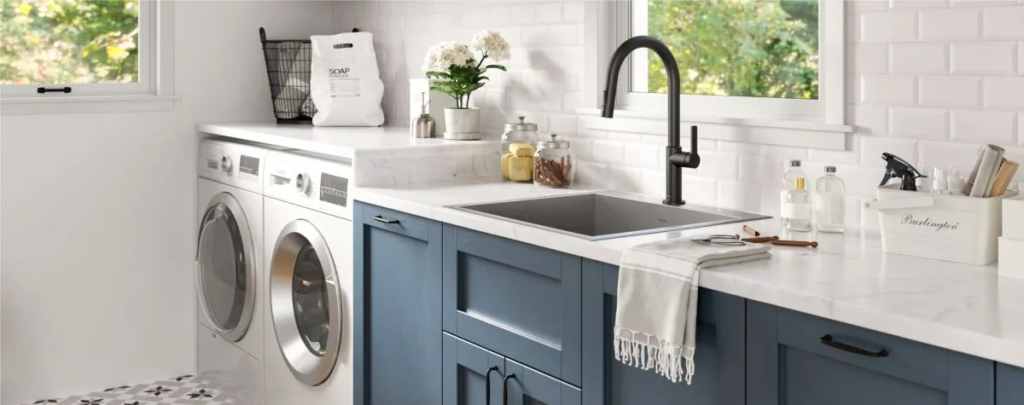
Utility sinks are built for tough cleaning jobs and are often found in utility rooms, garages, or basements. These sinks have a deep, wide basin, perfect for washing clothes, cleaning tools, or bathing pets. They are often made from durable materials like stainless steel or plastic and are less focused on aesthetics than other kitchen sinks.
Pros:
- Perfect for tough cleaning tasks or heavy-duty use.
- Often used in utility rooms or garages, keeping the kitchen sink clean for food-related tasks.
Cons:
- Not ideal for food prep or kitchen design.
- May not have the polished look required for a main kitchen sink.
Every kind of kitchen sink offers its benefits and works well in different kitchen designs and uses. If you want a basic, practical sink like a single bowl or something more heavy-duty like a farmhouse or workstation sink, there’s a choice for every taste and requirement. Think about your kitchen’s size, layout, and your daily sink activities to choose the best option.
What Are Standard Kitchen Sink Sizes?
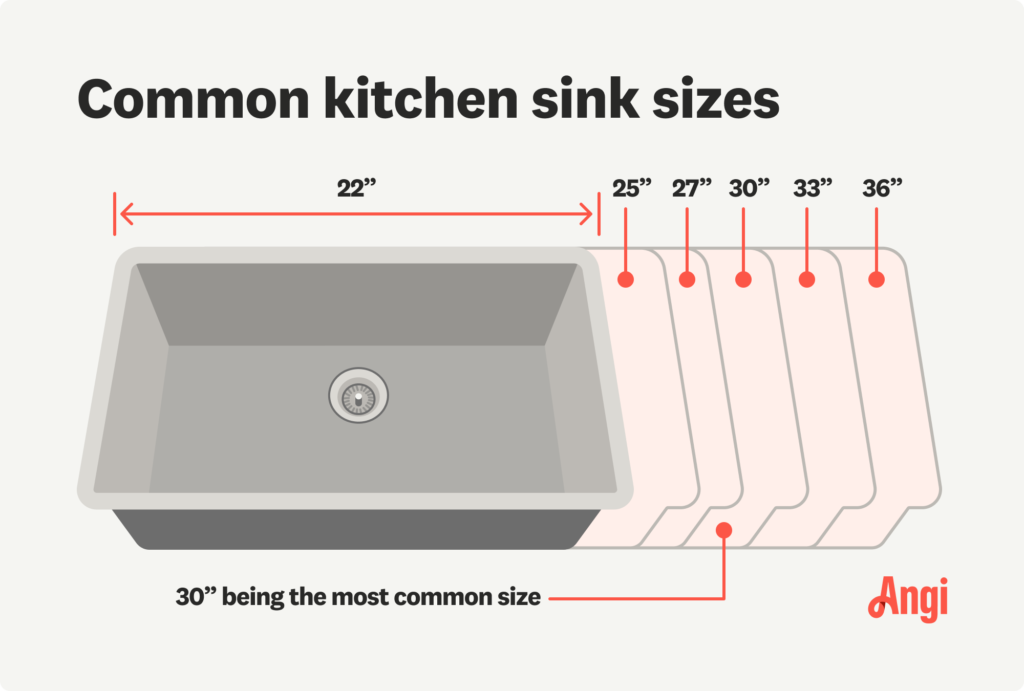
When choosing a kitchen sink, knowing the standard sizes will help you determine what fits best in your space. Here’s an overview of common kitchen sink sizes:
- Small (24-25 inches): Ideal for compact kitchens with limited space.
- Standard (27-30 inches): The most common size for average-sized kitchens. It offers enough space for most everyday tasks.
- Large (33 inches): Great for larger kitchens or families who need extra space for washing big pots and pans.
- Oversized (36 inches and above): Best suited for professional kitchens or very large family kitchens where deep and wide sinks are needed.
Which Kitchen Sink Material Is Best?
The material of your kitchen sink plays a big role in its durability and ease of cleaning. Here are some popular materials to choose from:
Stainless Steel
The most popular choice for kitchen sinks, stainless steel is durable, easy to clean, and resistant to rust and stains. It’s available in various styles and works well with most kitchen designs.
Granite Quartz Composite
This material blends quartz with resin to create a tough, low-maintenance surface. It’s scratch, stain, and heat-resistant, making it perfect for busy kitchens.
Fireclay
Fireclay sinks have a smooth, non-porous surface and are typically used in farmhouse-style sinks. They are incredibly durable and resistant to chips, scratches, and stains.
Cast Iron
Cast iron sinks are coated with porcelain enamel, creating a smooth, shiny finish that’s easy to clean. These sinks are extremely durable but can be quite heavy.
Copper
Copper sinks are beautiful, durable, and naturally resistant to bacteria. They develop a unique patina over time, making each sink one-of-a-kind.
Sink Configurations: Finding the Right One for Your Kitchen
Before you purchase, consider the configuration of your sink—such as the number of bowls and depth—based on your kitchen’s layout and how you plan to use it.
Single-Bowl Sinks
Single-bowl sinks offer plenty of space for washing large pots and pans. These are ideal for smaller kitchens or those who need a simple, spacious sink.
Double-Bowl Sinks
Double-bowl sinks are perfect for multitasking, allowing you to separate tasks like washing and rinsing. They come in various bowl size ratios (50/50, 60/40, 70/30) for added versatility.
Triple-Bowl Sinks
A triple-bowl sink adds a third, smaller bowl, often used for prepping or washing smaller items. It’s great for large kitchens with plenty of space.
Sink Size and Cabinet Compatibility
When choosing a sink, make sure it fits your kitchen cabinet. Here are a few tips:
- Measure the Cabinet Width: Most standard sinks fit into 30-inch or 36-inch-wide cabinets.
- Cabinet Size: Ensure your cabinet can accommodate the sink you choose. Farmhouse sinks, for example, may require a custom cabinet.
- Depth: The depth of your sink is also important. Deeper sinks are great for large pots and dishes but require a taller cabinet.
Final Thoughts
Choosing the right sink size, type, and material is essential for both function and style. Consider your kitchen’s layout, your family’s needs, and the amount of maintenance you’re willing to do. Whether you need a deep farmhouse sink or a sleek undermount sink, there’s a perfect option for every kitchen.

.webp)
